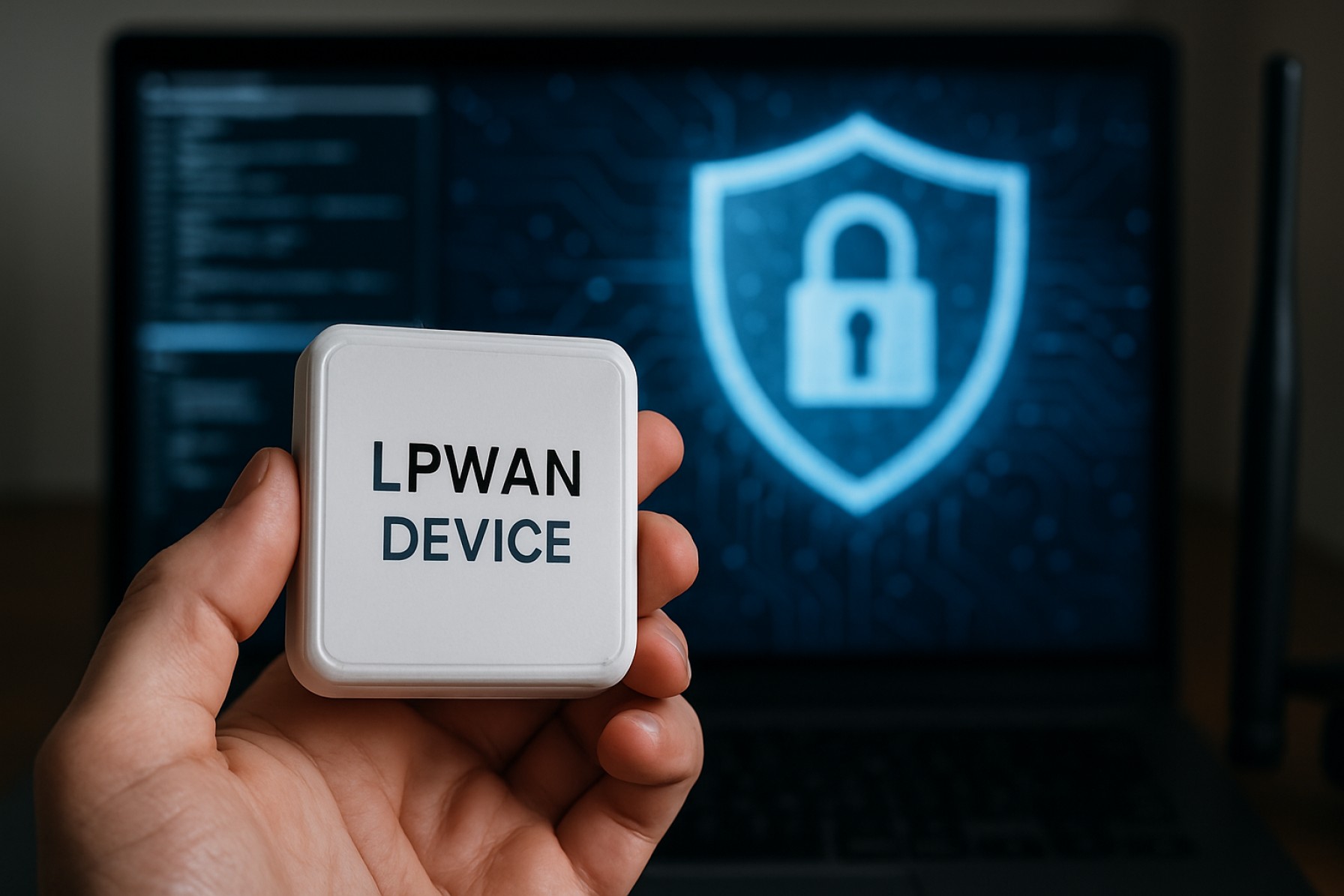Securing the Future: How LPWAN Device Security Solutions Will Transform IoT Protection in 2025 and Beyond. Explore Market Growth, Emerging Technologies, and Strategic Insights for the Next Five Years.
- Executive Summary: LPWAN Security in 2025
- Market Size, Growth Forecasts, and Key Drivers (2025–2030)
- Threat Landscape: Evolving Risks for LPWAN Devices
- Core Technologies Powering LPWAN Security Solutions
- Leading Vendors and Industry Initiatives
- Regulatory and Standards Landscape (e.g., IEEE, LoRa Alliance)
- Deployment Challenges and Best Practices
- Case Studies: Real-World LPWAN Security Implementations
- Innovation Pipeline: AI, Blockchain, and Quantum-Resistant Security
- Future Outlook: Strategic Recommendations and Market Opportunities
- Sources & References
Executive Summary: LPWAN Security in 2025
Low-Power Wide-Area Network (LPWAN) technologies—including LoRaWAN, NB-IoT, and Sigfox—have become foundational to the global Internet of Things (IoT) ecosystem, enabling massive deployments of battery-powered devices across sectors such as utilities, smart cities, logistics, and agriculture. As of 2025, the proliferation of LPWAN-connected devices has brought device security to the forefront, with industry stakeholders intensifying efforts to address evolving cyber threats and regulatory requirements.
The security landscape for LPWAN devices in 2025 is shaped by several key trends. First, the sheer scale of device deployments—often in remote or unattended locations—has increased the attack surface, making robust device authentication, data encryption, and secure key management essential. Leading LPWAN technology providers, such as Semtech (the steward of LoRa technology), have integrated advanced security features into their chipsets, including hardware-based cryptographic modules and secure element support. Similarly, STMicroelectronics and Nordic Semiconductor have expanded their LPWAN portfolios with secure microcontrollers and radio modules, supporting end-to-end encryption and secure boot processes.
On the network side, organizations like the LoRa Alliance have updated specifications to mandate stronger security practices, such as device-level unique keys, mutual authentication, and over-the-air (OTA) firmware updates. The LoRaWAN 1.1 specification, for example, enforces two-layer encryption and session key rotation, which are now widely adopted in new deployments. For cellular LPWAN (NB-IoT, LTE-M), operators including Vodafone and Orange have implemented SIM-based authentication and leverage the security infrastructure of mobile networks, providing a higher baseline of device and data protection.
Device manufacturers and solution integrators are also responding to increased regulatory scrutiny, particularly in Europe and Asia, where new IoT security standards are being enforced. This has led to a surge in demand for certified secure elements and trusted platform modules (TPMs) from suppliers like Infineon Technologies and NXP Semiconductors. These components enable secure storage of credentials and cryptographic operations, reducing the risk of device cloning and unauthorized access.
Looking ahead, the outlook for LPWAN device security is defined by ongoing collaboration between technology providers, network operators, and standards bodies. The next few years will see further integration of zero-trust principles, automated threat detection, and remote attestation capabilities. As LPWAN continues to underpin critical infrastructure and industrial applications, investment in device security solutions will remain a top priority for the ecosystem.
Market Size, Growth Forecasts, and Key Drivers (2025–2030)
The market for Low-Power Wide-Area Network (LPWAN) device security solutions is poised for robust growth between 2025 and 2030, driven by the accelerating deployment of LPWAN technologies such as LoRaWAN, NB-IoT, and Sigfox across critical sectors including smart cities, utilities, logistics, and industrial automation. As the installed base of LPWAN-connected devices is projected to surpass several billion units globally by 2030, the imperative for robust security solutions is intensifying, particularly in light of increasing cyber threats targeting IoT infrastructure.
Key industry players such as Semtech Corporation (a principal steward of LoRa technology), Huawei Technologies (a major NB-IoT proponent), and Sigfox (pioneers of ultra-narrowband LPWAN) are actively investing in advanced security frameworks. These include device authentication, end-to-end encryption, secure key provisioning, and over-the-air (OTA) update mechanisms. For example, Semtech Corporation has emphasized the integration of AES-128 encryption and mutual authentication in LoRaWAN devices, while Huawei Technologies continues to enhance NB-IoT security through SIM-based authentication and network slicing.
The market’s expansion is further propelled by regulatory and industry initiatives. The European Telecommunications Standards Institute (ETSI) and the 3rd Generation Partnership Project (3GPP) are setting new security standards for LPWAN protocols, mandating stronger cryptographic measures and device lifecycle management. These standards are expected to become increasingly influential in procurement and deployment decisions, especially for applications in critical infrastructure and public safety.
From a demand perspective, the proliferation of smart metering, asset tracking, and environmental monitoring solutions is creating a vast attack surface, making security a top priority for device manufacturers and network operators. The growing sophistication of cyberattacks—such as device spoofing, data interception, and denial-of-service—has led to a surge in demand for integrated security solutions that can be deployed at scale with minimal power and bandwidth overhead.
Looking ahead to 2030, the LPWAN device security solutions market is expected to witness double-digit compound annual growth rates, with Asia-Pacific and Europe emerging as key regions due to large-scale smart city and industrial IoT initiatives. Strategic partnerships between chipset vendors, network operators, and security solution providers will be critical in shaping the competitive landscape and ensuring the resilience of LPWAN ecosystems worldwide.
Threat Landscape: Evolving Risks for LPWAN Devices
The threat landscape for Low-Power Wide-Area Network (LPWAN) devices is rapidly evolving as these networks become integral to critical infrastructure, smart cities, and industrial IoT deployments. In 2025, the proliferation of LPWAN technologies such as LoRaWAN, NB-IoT, and Sigfox has expanded the attack surface, drawing increased attention from both cybercriminals and security researchers. The unique characteristics of LPWAN—such as long-range communication, low data rates, and constrained device resources—pose distinct security challenges compared to traditional IoT or cellular networks.
Recent years have seen a rise in targeted attacks exploiting the minimalistic security implementations often found in LPWAN devices. For example, researchers have demonstrated vulnerabilities in LoRaWAN networks, including weak key management and susceptibility to replay attacks, which can allow unauthorized access or data manipulation. The LoRa Alliance, the primary body overseeing LoRaWAN standards, has responded by updating its specifications to mandate stronger encryption (AES-128) and improved device authentication mechanisms. However, the adoption of these enhanced security features remains inconsistent across the global device ecosystem.
Similarly, NB-IoT, standardized by the 3rd Generation Partnership Project (3GPP), benefits from leveraging established cellular security protocols, including mutual authentication and over-the-air (OTA) updates. Yet, the integration of legacy devices and the use of default credentials continue to present risks, especially in large-scale deployments where device management is complex. The GSMA has issued guidelines for IoT security, emphasizing the need for secure boot, lifecycle management, and regular patching, but implementation varies widely among manufacturers.
Supply chain vulnerabilities are another growing concern. As LPWAN modules are sourced from a diverse array of global suppliers, the risk of compromised firmware or hardware “backdoors” has increased. Major chipset providers such as Semtech (for LoRa) and Qualcomm (for NB-IoT) have invested in secure element integration and hardware-based root-of-trust solutions to mitigate these risks, but cost and power constraints can limit their deployment in ultra-low-cost devices.
Looking ahead, the outlook for LPWAN device security is shaped by both regulatory and technological trends. The European Union’s Cyber Resilience Act and similar initiatives in Asia and North America are expected to drive stricter security requirements for connected devices, including LPWAN endpoints. Industry alliances and leading manufacturers are accelerating the development of lightweight cryptographic protocols and automated device management platforms to address the unique constraints of LPWAN environments. As the number of connected LPWAN devices is projected to surpass 2 billion by 2027, the imperative for robust, scalable security solutions will only intensify.
Core Technologies Powering LPWAN Security Solutions
Low-Power Wide-Area Network (LPWAN) technologies, such as LoRaWAN, NB-IoT, and Sigfox, are foundational to the rapidly expanding Internet of Things (IoT) ecosystem. As deployments scale into the tens of millions of devices in 2025, robust security solutions are critical to protect data integrity, device authentication, and network resilience. The core technologies powering LPWAN security solutions are evolving rapidly, driven by both industry standards and proprietary innovations from leading technology providers.
A central pillar of LPWAN security is end-to-end encryption. For example, the LoRaWAN protocol mandates AES-128 encryption at both the network and application layers, ensuring that data remains confidential and tamper-resistant as it traverses public or private networks. The LoRa Alliance, the official body overseeing LoRaWAN standards, continues to update its specifications to address emerging threats, with the latest versions emphasizing enhanced key management and device provisioning mechanisms.
Device authentication is another critical area. In 2025, hardware-based secure elements are increasingly integrated into LPWAN modules to store cryptographic keys and perform secure boot processes. Companies such as STMicroelectronics and NXP Semiconductors are prominent suppliers of secure elements and microcontrollers tailored for LPWAN devices, offering tamper-resistant storage and cryptographic acceleration. These hardware solutions are complemented by secure device onboarding protocols, such as those promoted by the GSMA for NB-IoT, which leverage SIM-based authentication and remote provisioning.
Over-the-air (OTA) firmware updates are essential for maintaining device security throughout their lifecycle. Secure OTA mechanisms, now standard in most LPWAN platforms, use digital signatures and encrypted channels to ensure that only authenticated and untampered firmware is installed. Semtech, a key LoRa technology provider, and Huawei, a major NB-IoT infrastructure supplier, both emphasize secure OTA update frameworks in their device and network solutions.
Network-level security is also advancing. Adaptive data rate management, anomaly detection, and intrusion prevention systems are being integrated into LPWAN network servers. These features, often provided by network operators such as Sigfox and Orange, help identify and mitigate threats such as device spoofing, replay attacks, and denial-of-service attempts.
Looking ahead, the convergence of LPWAN with edge computing and AI-driven security analytics is expected to further strengthen device and network protection. Industry alliances and manufacturers are collaborating to standardize security certifications and compliance frameworks, ensuring that LPWAN deployments remain resilient as the threat landscape evolves through 2025 and beyond.
Leading Vendors and Industry Initiatives
The Low-Power Wide-Area Network (LPWAN) ecosystem is rapidly expanding, with billions of connected devices projected to be deployed globally by 2025. As LPWAN technologies such as LoRaWAN, NB-IoT, and Sigfox become foundational to smart cities, utilities, and industrial IoT, device security has emerged as a critical concern. In response, leading vendors and industry bodies are intensifying their focus on robust security solutions tailored to the unique constraints and requirements of LPWAN devices.
Among the most prominent players, Semtech Corporation—the steward of LoRa technology—has been instrumental in advancing LoRaWAN security. In 2024 and 2025, Semtech has continued to enhance its LoRa Edge and LoRa Connect chipsets with hardware-based cryptographic engines, secure key storage, and support for over-the-air (OTA) security updates. These features are designed to mitigate risks such as device cloning, eavesdropping, and unauthorized access, which are particularly acute in large-scale, distributed LPWAN deployments.
On the cellular LPWAN front, Ericsson and Nokia are leading the charge in integrating advanced security frameworks into NB-IoT and LTE-M networks. Both companies have prioritized end-to-end encryption, mutual authentication, and secure device onboarding as part of their IoT connectivity platforms. In 2025, Ericsson’s IoT Accelerator and Nokia’s IMPACT IoT platform are being widely adopted by mobile operators and enterprises seeking to ensure device integrity and data confidentiality across massive IoT deployments.
Industry alliances are also playing a pivotal role. The LoRa Alliance has updated its LoRaWAN specification to mandate stronger security primitives, including AES-128 encryption and join server separation, while providing certification programs to validate device compliance. Similarly, the GSMA has published security guidelines and best practices for cellular LPWAN, emphasizing secure element integration and lifecycle management.
Device manufacturers such as STMicroelectronics and Nordic Semiconductor are embedding secure elements and trusted execution environments into their LPWAN chipsets, enabling hardware root-of-trust and secure firmware updates. These capabilities are increasingly demanded by sectors such as utilities and critical infrastructure, where device compromise could have significant operational and safety implications.
Looking ahead, the convergence of regulatory pressure, customer demand, and evolving threat landscapes is expected to drive further innovation in LPWAN device security. Vendors are investing in post-quantum cryptography research and zero-trust architectures, anticipating future requirements as LPWAN networks scale to tens of billions of devices by the late 2020s.
Regulatory and Standards Landscape (e.g., IEEE, LoRa Alliance)
The regulatory and standards landscape for Low-Power Wide-Area Network (LPWAN) device security is rapidly evolving in 2025, reflecting the sector’s growing maturity and the increasing deployment of LPWAN technologies in critical infrastructure, smart cities, and industrial IoT. As LPWAN adoption accelerates, industry bodies and standards organizations are intensifying efforts to address security challenges unique to these networks, such as constrained device resources, long-range communication, and large-scale deployments.
The IEEE continues to play a pivotal role in shaping LPWAN security standards. The IEEE 802.15.4 standard, foundational for many LPWAN protocols, has seen ongoing enhancements to its security framework, including improved key management and authentication mechanisms tailored for low-power devices. In 2025, the IEEE is actively working on amendments to address emerging threats, such as side-channel attacks and over-the-air firmware vulnerabilities, ensuring that LPWAN devices remain resilient as attack surfaces expand.
The LoRa Alliance, steward of the LoRaWAN protocol, has made significant strides in standardizing security best practices. In 2024 and 2025, the Alliance released updated LoRaWAN specifications emphasizing end-to-end encryption, device identity management, and secure join procedures. The LoRaWAN 1.1.x series, for example, mandates mutual authentication between devices and network servers, and introduces advanced key derivation methods to mitigate risks from device cloning and replay attacks. The Alliance also launched a certification program for device security, requiring manufacturers to demonstrate compliance with these enhanced protocols before market entry.
Other key organizations, such as the European Telecommunications Standards Institute (ETSI), are contributing to the regulatory framework by publishing guidelines and technical specifications for LPWAN security. ETSI’s TS 103 645, originally focused on consumer IoT, is being adapted to address the unique requirements of LPWAN deployments, including secure boot, lifecycle management, and vulnerability disclosure processes. These efforts are increasingly referenced by regulators in Europe and beyond as baseline requirements for LPWAN device certification.
Looking ahead, the regulatory outlook for LPWAN device security is expected to tighten further. Governments in the EU, North America, and Asia-Pacific are signaling intent to mandate compliance with recognized security standards for critical LPWAN applications, particularly in utilities, healthcare, and public safety. Industry alliances are responding by accelerating the development of interoperable security frameworks and certification schemes, aiming to harmonize global requirements and reduce fragmentation. As a result, device manufacturers and network operators are under growing pressure to adopt robust, standards-based security solutions to ensure regulatory compliance and market access in the coming years.
Deployment Challenges and Best Practices
The deployment of Low-Power Wide-Area Network (LPWAN) device security solutions in 2025 faces a complex landscape shaped by the rapid expansion of IoT applications, evolving threat vectors, and the unique constraints of LPWAN technologies. LPWAN protocols such as LoRaWAN, NB-IoT, and Sigfox are designed for long-range, low-bandwidth communication, making them ideal for smart cities, utilities, and industrial monitoring. However, their low-power and low-cost nature often limits the computational resources available for robust security measures, presenting significant deployment challenges.
A primary challenge is the secure provisioning and management of device credentials at scale. With millions of devices expected to be deployed globally, manual key management is impractical and error-prone. Industry leaders like Semtech Corporation, a key developer of LoRa technology, emphasize the importance of automated, hardware-based key storage and over-the-air (OTA) key updates to mitigate risks associated with device cloning and unauthorized access. Similarly, Nokia and Ericsson, both major suppliers of NB-IoT infrastructure, are advancing secure element integration and remote SIM provisioning to streamline secure device onboarding and lifecycle management.
Another significant challenge is ensuring end-to-end data confidentiality and integrity across heterogeneous LPWAN networks. While protocols like LoRaWAN 1.1 have introduced enhanced security features such as mutual authentication and frame counters, real-world deployments often lag in adopting these updates due to legacy device constraints and interoperability issues. Organizations such as the LoRa Alliance are actively promoting best practices for firmware updates and security patching, but the fragmented nature of the LPWAN ecosystem can slow adoption.
Best practices emerging in 2025 focus on a layered security approach. Device manufacturers are increasingly embedding hardware root-of-trust modules, as seen in solutions from STMicroelectronics and NXP Semiconductors, to enable secure boot, encrypted storage, and tamper detection. Network operators are deploying anomaly detection and network-level intrusion prevention systems to identify compromised devices or unusual traffic patterns. The adoption of zero-touch provisioning and secure OTA updates is becoming standard, reducing human error and ensuring devices remain protected against newly discovered vulnerabilities.
Looking ahead, the outlook for LPWAN device security solutions is shaped by ongoing collaboration between device makers, network operators, and standards bodies. Initiatives led by the GSMA and the ETSI are expected to further harmonize security requirements and certification schemes, driving broader adoption of best practices. As LPWAN deployments scale into critical infrastructure and industrial IoT, robust, scalable security solutions will be essential to safeguard data and maintain trust in these pervasive networks.
Case Studies: Real-World LPWAN Security Implementations
As the adoption of Low-Power Wide-Area Network (LPWAN) technologies accelerates across sectors such as utilities, smart cities, and industrial IoT, robust device security solutions have become a critical focus. In 2025, several real-world case studies highlight how organizations are addressing the unique security challenges of LPWAN deployments, particularly for protocols like LoRaWAN, NB-IoT, and Sigfox.
One prominent example is the deployment of secure LoRaWAN-based smart metering infrastructure by Semtech Corporation, a key LoRa technology provider. In collaboration with utility partners, Semtech has implemented end-to-end AES-128 encryption at both the network and application layers, leveraging the LoRaWAN specification’s security framework. This approach ensures that data transmitted from smart meters to utility control centers remains confidential and tamper-resistant, even in large-scale, geographically dispersed networks. The company’s solutions also incorporate secure key provisioning and device authentication mechanisms, which are essential for preventing unauthorized device access and mitigating risks of device cloning or replay attacks.
Another significant case is the use of NB-IoT for critical infrastructure monitoring by Huawei Technologies. Huawei’s NB-IoT modules, widely deployed in smart city and industrial applications, utilize SIM-based authentication and leverage the security features inherent in 3GPP standards, such as mutual authentication and over-the-air (OTA) key updates. In 2025, several municipal governments in Asia and Europe have reported successful rollouts of NB-IoT-enabled sensors for water quality and air pollution monitoring, with security audits confirming compliance with stringent data protection regulations. These implementations demonstrate the effectiveness of leveraging cellular-grade security in LPWAN environments.
In the realm of Sigfox, Sigfox itself has partnered with device manufacturers to enhance device identity management and message integrity. Recent deployments in logistics and asset tracking have incorporated unique device IDs and message authentication codes (MACs) to ensure that only authorized devices can transmit data to the network. Sigfox’s lightweight security model, while less complex than LoRaWAN or NB-IoT, has proven effective for low-cost, battery-powered devices where computational resources are limited.
Looking ahead, industry leaders such as STMicroelectronics and NXP Semiconductors are integrating hardware-based security elements—such as secure elements (SEs) and trusted execution environments (TEEs)—into LPWAN chipsets. These advancements are expected to further strengthen device authentication, secure boot, and firmware update processes, addressing emerging threats as LPWAN networks scale globally.
Innovation Pipeline: AI, Blockchain, and Quantum-Resistant Security
Low-Power Wide-Area Network (LPWAN) technologies—including LoRaWAN, NB-IoT, and Sigfox—are foundational to the global Internet of Things (IoT) ecosystem, enabling massive device deployments in smart cities, utilities, logistics, and agriculture. As the number of connected LPWAN devices is projected to surpass several billion by 2025, the security of these devices and their networks is a critical concern. The innovation pipeline for LPWAN device security is increasingly shaped by the integration of artificial intelligence (AI), blockchain, and quantum-resistant cryptography, with leading industry players and standards bodies driving advancements.
AI-driven security solutions are gaining traction in LPWAN environments, where resource constraints and large-scale deployments make traditional security monitoring impractical. Companies such as Semtech—a key steward of the LoRaWAN protocol—are investing in AI-based anomaly detection and threat intelligence platforms that can identify unusual device behavior, unauthorized access, or network intrusions in real time. These systems leverage machine learning models trained on vast datasets of device telemetry, enabling adaptive responses to evolving threats without overwhelming network or device resources.
Blockchain technology is also being piloted to address LPWAN security challenges, particularly in device authentication, data integrity, and secure firmware updates. By decentralizing trust and providing immutable audit trails, blockchain can help mitigate risks associated with device spoofing and unauthorized data manipulation. Orange, a major European telecom operator, has announced initiatives to integrate blockchain-based identity management and secure device onboarding for its IoT and LPWAN offerings, aiming to enhance transparency and resilience across distributed device fleets.
With the advent of quantum computing, the LPWAN sector is proactively exploring quantum-resistant (post-quantum) cryptographic algorithms to future-proof device security. Organizations such as the LoRa Alliance and 3GPP (which oversees NB-IoT standards) are collaborating with cryptography experts to evaluate and standardize lightweight, quantum-safe encryption schemes suitable for constrained LPWAN devices. Early-stage pilots are expected to emerge by 2025, with broader adoption anticipated as quantum threats become more tangible.
Looking ahead, the convergence of AI, blockchain, and quantum-resistant security is set to define the next generation of LPWAN device protection. Industry leaders are expected to roll out integrated security frameworks that combine real-time threat detection, decentralized trust, and future-proof encryption, ensuring that LPWAN networks remain robust against both current and emerging cyber risks. As regulatory scrutiny intensifies and IoT deployments scale, these innovations will be pivotal in safeguarding critical infrastructure and sensitive data across the LPWAN landscape.
Future Outlook: Strategic Recommendations and Market Opportunities
The future outlook for Low-Power Wide-Area Network (LPWAN) device security solutions is shaped by the rapid expansion of IoT deployments, regulatory pressures, and evolving threat landscapes. As of 2025, LPWAN technologies such as LoRaWAN, NB-IoT, and Sigfox are increasingly integral to smart cities, utilities, logistics, and industrial automation. This proliferation brings both opportunities and challenges for security solution providers and end-users.
A key strategic recommendation for stakeholders is to prioritize end-to-end security architectures. Device manufacturers and network operators are expected to invest in hardware-based root-of-trust, secure boot, and over-the-air (OTA) update mechanisms. For example, Semtech Corporation, a leading LoRa chip supplier, has emphasized the integration of AES-128 encryption and mutual authentication in its LoRa devices, setting a benchmark for device-level security. Similarly, Nokia and Ericsson are advancing NB-IoT security by embedding SIM-based authentication and leveraging 3GPP security standards in their cellular IoT solutions.
Market opportunities are emerging for security-as-a-service platforms tailored to LPWAN environments. These platforms offer centralized key management, anomaly detection, and compliance monitoring, addressing the unique constraints of low-power devices. Companies like Arm are expanding their Pelion IoT platform to include device identity and lifecycle management, while Thales is providing secure element solutions and remote SIM provisioning for massive IoT deployments.
Regulatory trends are also shaping the market. The European Union’s Cyber Resilience Act and similar initiatives in Asia and North America are expected to mandate baseline security requirements for connected devices, including LPWAN endpoints. This regulatory momentum will drive demand for certified security modules and compliance-focused solutions, creating opportunities for suppliers with robust certification portfolios.
Looking ahead to the next few years, the LPWAN security market is likely to see increased collaboration between device vendors, network operators, and cloud service providers. Open standards and interoperability frameworks, such as those promoted by the LoRa Alliance and 3GPP, will be critical in enabling scalable and secure deployments. Strategic partnerships and ecosystem development will be essential for addressing the fragmented nature of LPWAN technologies and ensuring holistic security coverage.
- Invest in hardware-based security and OTA update capabilities.
- Adopt security-as-a-service models for scalable management.
- Align with emerging regulatory requirements and certification programs.
- Engage in industry alliances to drive interoperability and best practices.
In summary, the LPWAN device security landscape in 2025 and beyond presents significant growth opportunities for solution providers that can deliver robust, standards-based, and scalable security tailored to the unique needs of low-power IoT networks.
Sources & References
- STMicroelectronics
- Nordic Semiconductor
- LoRa Alliance
- Vodafone
- Orange
- Infineon Technologies
- Sigfox
- 3rd Generation Partnership Project (3GPP)
- 3rd Generation Partnership Project (3GPP)
- Qualcomm
- Nokia
- IEEE
- Huawei Technologies
- Sigfox
- STMicroelectronics
- NXP Semiconductors
- Orange
- LoRa Alliance
- Arm
- Thales












